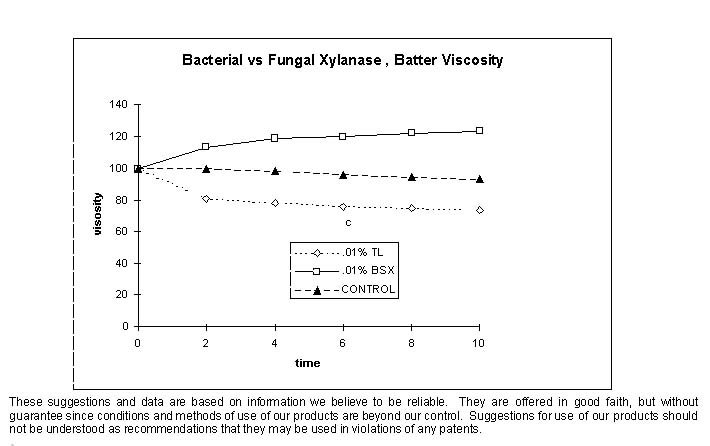Comparison of Fungal Xylanase versus a Bacterial Xylanase
Source: Enzyme Development Corporation
Enzyme Development Corporationarch on starch gluten separation shows that certain xylanases reduce the rate of starch gluten separation. It is thought that the xylanases in question convert the insoluble xylan compounds to soluble xylans, which causes a dramatic increase in viscosity batter. This behavior can be of benefit to the baking industry by effectively increasing absorption.![]()
<%=company%>
This behavior is illustrated on the graph below. A 45% flour water slurry was prepared. The slurry was tempered at 75°F for 15 minutes. The enzyme was added and viscosity was monitored by Coesfeld rotation viscometer. Each enzyme was added at 0.01% on the weight of the flour. When tested using the same assay method, the TL had 2000 units per gram and the BSX had 150 units per gram. TL represents a typical xylanase derived from Trichoderma longibrachiatum. BSX represents a xylanase derived from Bacillus subtilis. At the end of ten minutes, the BSX had a viscosity increase of 30+% compared to the control, while the TL caused a decrease of 20%+ compared to the control.

<%=company%>
